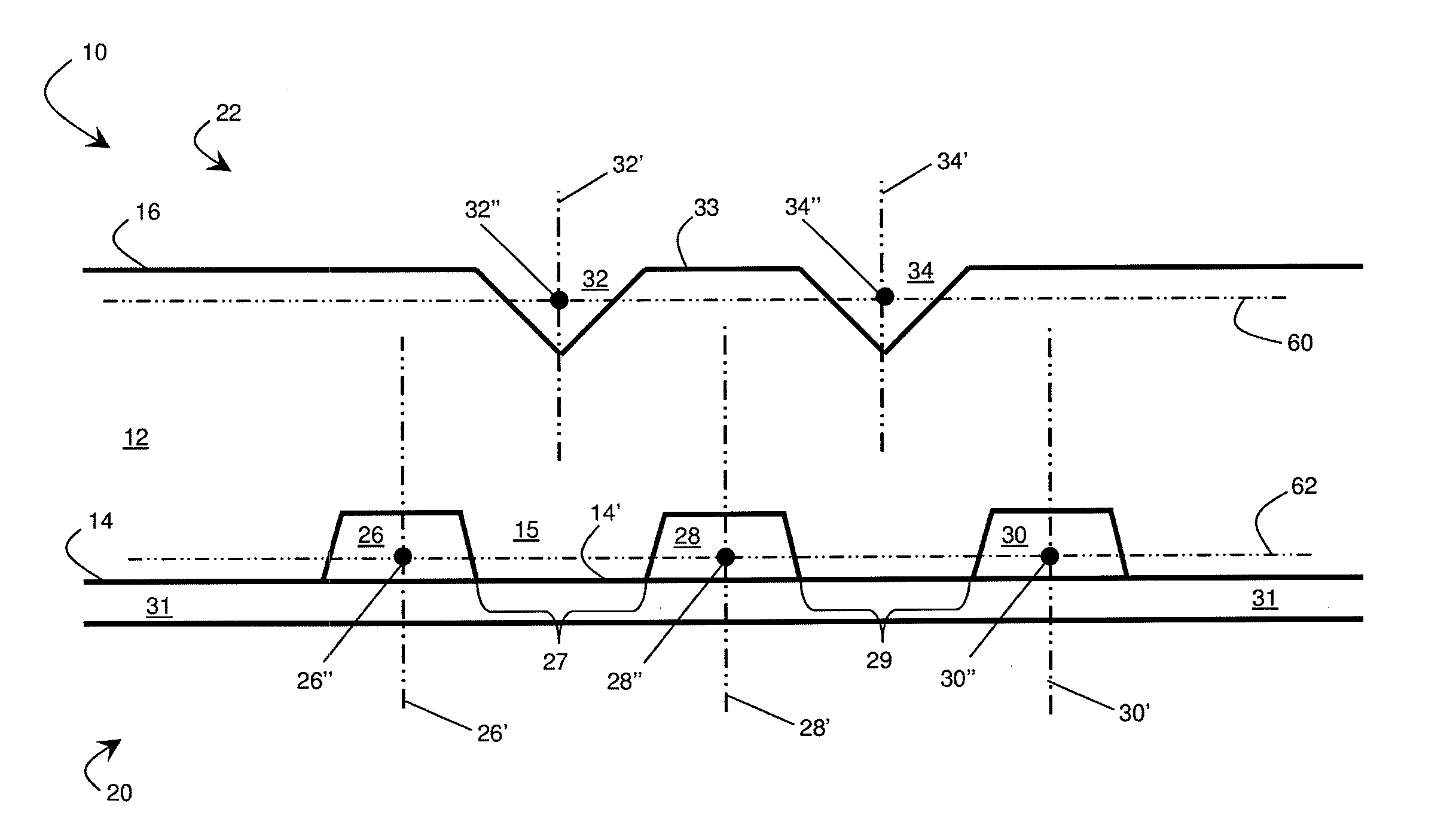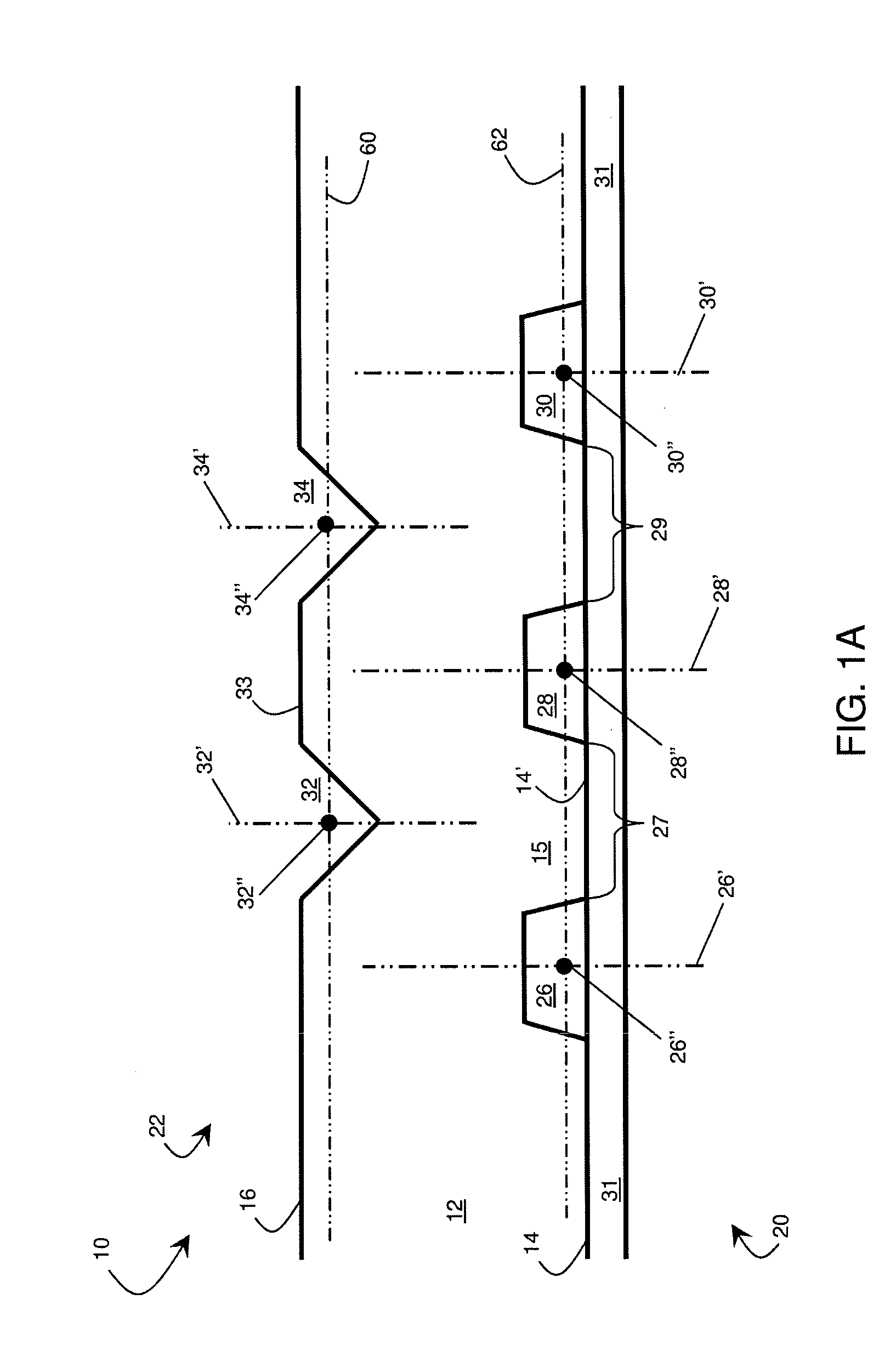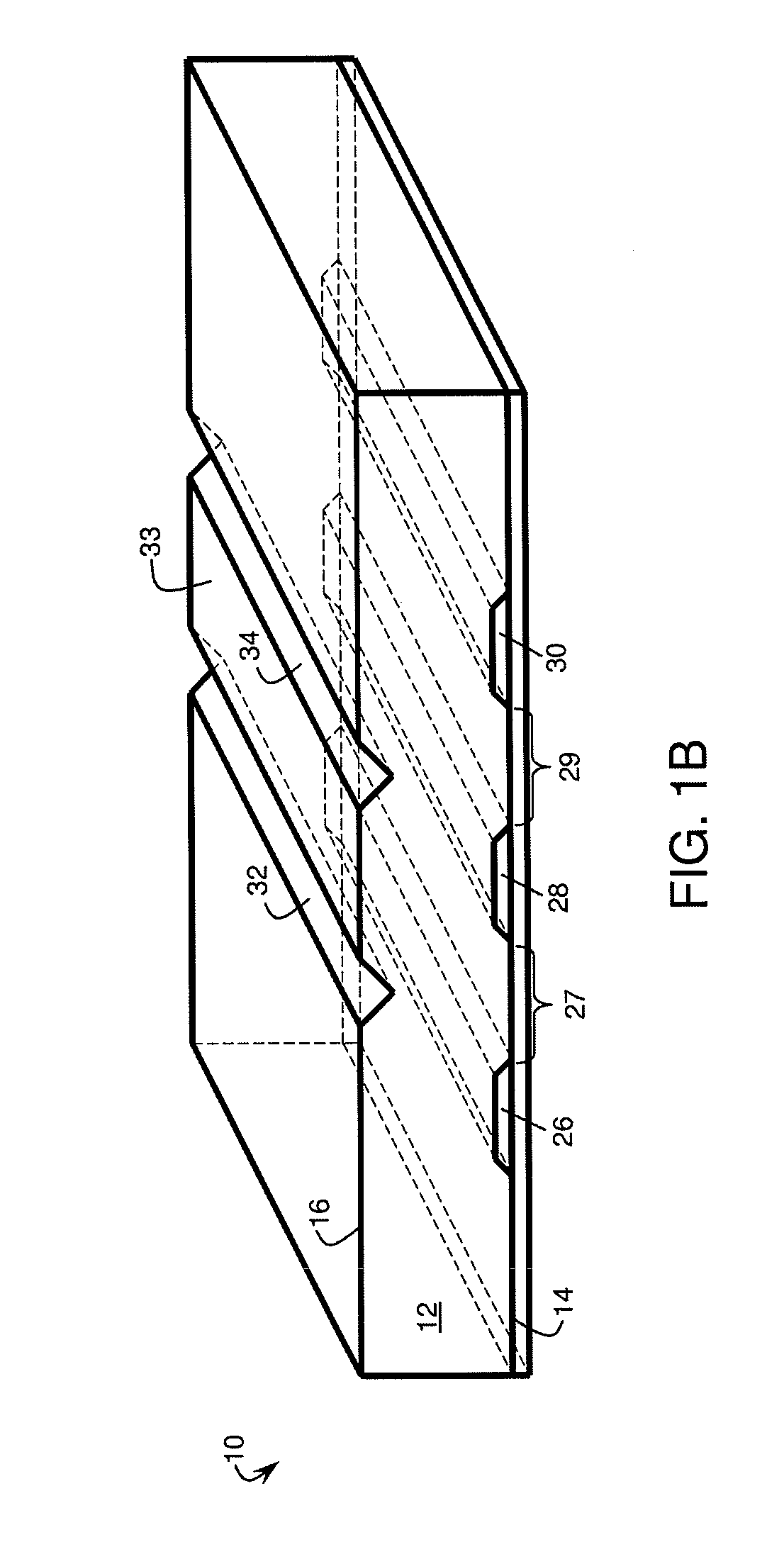Structures for controlling light interaction with microfluidic devices
a microfluidic device and light interaction technology, applied in the field of microfluidic systems, can solve the problems of time-consuming alignment procedures, difficult to carry out accurate optical measurements (e.g., absorbance or transmission) on a microfluidic system,
- Summary
- Abstract
- Description
- Claims
- Application Information
AI Technical Summary
Benefits of technology
Problems solved by technology
Method used
Image
Examples
example 1
Fabrication of Microfluidic Channels
[0120]A method for fabricating a microfluidic channel system is described.
[0121]Channel systems, such as the ones shown in FIGS. 1A and 1B, were designed with a computer-aided design (CAD) program. The microfluidic devices were formed in poly(dimethylsiloxane) Sylgard 184 (PDMS, Dow Corning, Ellsworth, Germantown, Wis.) by rapid prototyping using masters made in SU8 photoresist (MicroChem, Newton, Mass.). The masters were produced on a silicon wafer and were used to replicate the negative pattern in PDMS. The masters contained two levels of SU8, one level with a thickness (height) of ˜70 μm defining the channels in the immunoassay area, and a second thickness (height) of ˜360 μm defining the reagent storage and waste areas. Another master was designed with channel having a thickness (height) of 33 μm. The masters were silanized with (tridecafluoro-1,1,2,2-tetrahydrooctyl)trichlorosilane (ABC-R, Germany). PDMS was mixed according to the manufacture...
example 2
Performance of a System Comprising Triangular Optical Elements
[0123]This example describes the transmission profiles of systems employing a meandering channel, one with triangular optical elements (grooves) and another without. An article was fabricated in polystyrene with identical systems of fluidic channels on one side. Some of these channels included triangular optical elements between the channels on the other side (shielded channels). Other channels did not include triangular optical elements between them (normal / standard channels with no shielding). The channels were 160 microns in width. Intervening portions between the channels were 60 microns in width. The article thickness was designed using the model described above. Triangular optical elements were also designed as described in the model above with an angle of 35.3°, a width of 160 microns, and a pitch of 220 microns. Optical measurements were performed using a single collimated LED light source and a single photodiode ...
example 3
Reducing the Width of Intervening Portions
[0130]In this example, several samples with various widths of intervening portions were fabricated and tested. FIG. 7A includes a micrograph and a schematic illustration of a device comprising 120-micron-wide optical elements spaced 100 microns apart. In FIG. 7B, the optical elements are spaced only 30 microns apart. The channels were filled with dye (Erioglaucine) at various concentrations, and measurements of transmissions through the meandering channel region were taken. FIG. 7C includes a plot of the net OD as a function of the dye concentration for several devices including varied inter-element spacings. As can be seen from the plot, the OD increases with an increase in dye concentration and a decrease in inter-element spacing. Table 1 summarizes the theoretical maximum projected optical density (minimum transmission) and actual optical performance of these systems.
TABLE 1Predicted and measured maximum opticaldensities for various devic...
PUM
| Property | Measurement | Unit |
|---|---|---|
| Length | aaaaa | aaaaa |
| Length | aaaaa | aaaaa |
| Fraction | aaaaa | aaaaa |
Abstract
Description
Claims
Application Information
 Login to View More
Login to View More - R&D
- Intellectual Property
- Life Sciences
- Materials
- Tech Scout
- Unparalleled Data Quality
- Higher Quality Content
- 60% Fewer Hallucinations
Browse by: Latest US Patents, China's latest patents, Technical Efficacy Thesaurus, Application Domain, Technology Topic, Popular Technical Reports.
© 2025 PatSnap. All rights reserved.Legal|Privacy policy|Modern Slavery Act Transparency Statement|Sitemap|About US| Contact US: help@patsnap.com



